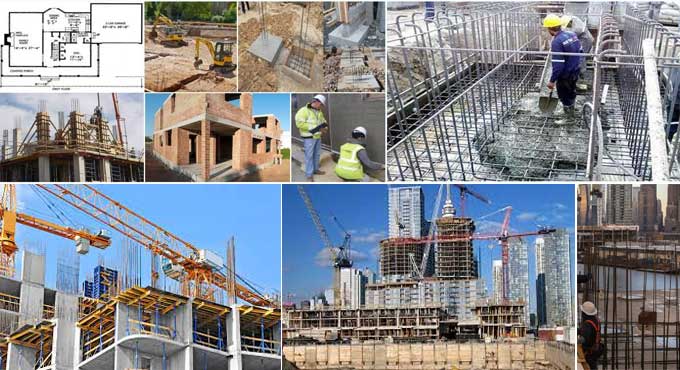
The Evolution of Construction: Harnessing Nano Technology for a Brighter Future

The construction industry, often seen as a traditional domain of bricks and mortar, is undergoing a profound transformation, ushered in by an unlikely ally which is nanotechnology. At the intersection of science and engineering, nanotechnology deals with materials and structures at the nanoscale, enabling the manipulation of matter at the molecular and atomic levels.
In this article, we embark on a journey through the innovative applications of nanotechnology in construction and peer into the horizon to glimpse a future where the tiny becomes mighty in shaping the buildings of tomorrow.
The Nanoscale Revolution
What is Nanotechnology?
Before we dive into the specifics, let's demystify nanotechnology. It's the science, engineering, and application of materials and structures with properties and functionalities that emerge at the nanometer scale, typically below 100 nanometers. This realm, one thousand times smaller than a human hair, has been harnessed to revolutionize construction.
The Power of Nanomaterials
At the heart of nanotechnology's influence on construction are nanomaterials. These materials, engineered at the nanoscale, offer remarkable properties such as exceptional strength, durability, thermal conductivity, and resistance to corrosion. Some of the game-changers include carbon nanotubes, nano silica, and nanoclay.
Reinventing Building Materials
Self-Healing Concrete
Imagine concrete that can heal its own cracks. With the integration of nanoscale capsules containing healing agents into concrete mixtures, we are witnessing the advent of self-healing concrete. This technology not only extends the lifespan of structures but also reduces maintenance costs.
Ultra-lightweight and High-Strength Materials
Nanotechnology has given birth to advanced composite materials that are ultra-lightweight yet incredibly strong. These materials can be used for constructing skyscrapers, bridges, and other structures, reducing the overall weight and thus the resources required.
Super-Insulating Materials
With nanotechnology, insulating materials have undergone a transformation. Aerogels, for instance, provide superlative insulation, reducing energy consumption and making buildings more environmentally friendly.
The Smart Construction Revolution
Nanosensors
Nanosensors embedded in construction materials can monitor structural health in real time. They can detect stress, strain, temperature, and even the presence of harmful gases, allowing for proactive maintenance and enhancing safety.
Self-Cleaning Surfaces
Nanocoatings can be applied to building surfaces, rendering them self-cleaning. These coatings use photocatalytic reactions to break down dirt and pollutants when exposed to light, keeping buildings pristine and reducing maintenance efforts.
Nanogenerators
Nanogenerators can convert mechanical energy into electrical energy, opening the door to harnessing vibrations and movements within structures to power sensors and other devices, making buildings smarter and more energy-efficient.
Sustainability and Environmental Impact
Reducing Carbon Footprint
The use of nanomaterials often leads to lighter and more durable structures, requiring fewer resources for construction and generating less waste. This results in a significant reduction in the carbon footprint of the construction industry.
Energy Efficiency
Nanotechnology's role in enhancing insulation and generating renewable energy within structures contributes to making buildings more energy-efficient and environmentally friendly.
Water Purification
Nanotechnology is also being employed to develop innovative water purification systems, ensuring a sustainable supply of clean water for construction purposes and the building's occupants.
Challenges and Ethical Considerations
Regulatory Oversight
As nanotechnology advances in construction, there is a growing need for regulatory frameworks to ensure the safety of workers, residents, and the environment.
Ethical Concerns
The use of nanotechnology raises ethical questions regarding privacy and surveillance when integrated with smart construction technologies. Striking a balance between innovation and ethics is crucial.
The Future: Building Beyond Imagination
Nanorobots
Nanorobots, tiny autonomous machines, hold the potential to revolutionize construction by carrying out intricate tasks like site preparation, materials assembly, and even repairs at the nanoscale.
Vertical Forests and Green Buildings
Nanotechnology will further enable the construction of vertical forests and green buildings with advanced materials that support the growth of vegetation, contributing to urban sustainability and air quality improvement.
Space Colonization
In the distant future, nanotechnology could play a pivotal role in constructing habitats on other planets or moons, where traditional construction methods are unfeasible.
Industry Collaboration:
The construction industry doesn't operate in isolation. Collaboration between construction companies, materials manufacturers, researchers, and regulatory bodies is essential. Sharing knowledge and best practices ensures that nanotechnology is integrated seamlessly into construction processes.
To learn more, watch the following video tutorial.
Video Source: Building Studies
Conclusion
As we navigate the shifting landscape of the construction industry, it is evident that nanotechnology is an invaluable ally. It transforms ordinary materials into extraordinary ones, making buildings more innovative, more durable, and sustainable. The future holds boundless possibilities, from self-healing skyscrapers to self-cleaning bridges and even habitats on other worlds, all constructed with the precision and ingenuity that only nanotechnology can offer.
However, we must tread cautiously, addressing regulatory and ethical concerns while harnessing the full potential of nanotechnology. With responsible development, the construction industry stands at the threshold of an era where the impossible becomes attainable, and our architectural aspirations are limited only by our imagination.
The journey is far from over, and as we continue to explore the endless opportunities that nanotechnology offers, we shape a future where our structures are not merely buildings but living, breathing testaments to human ingenuity and our capacity to build a better world.


